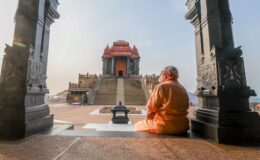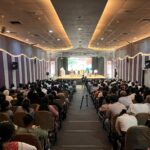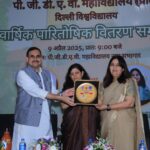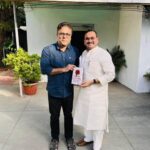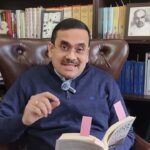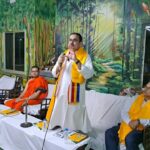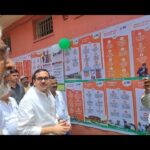A TRIBUTE TO SISTER NIVEDITA
- By : Anirban Ganguly
- Category : Articles
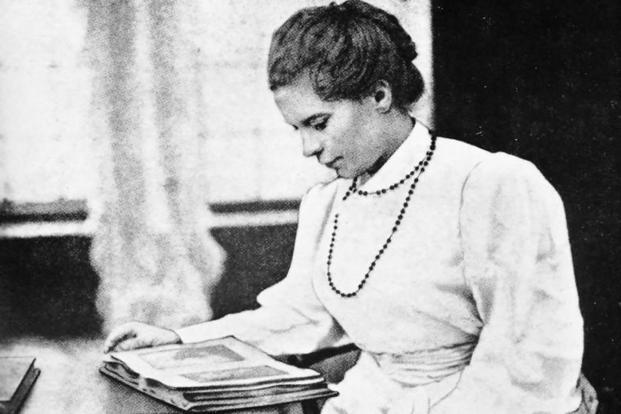
As we inch towards Sister Nivedita’s 150th birth anniversary, one would do well to recognise, re-evaluate her life and work and to rekindle a deeper and wider interest in her. That would, in a sense, be a tribute of gratefulness to her as Lokmata
The Sahitya Akademi award for literary excellence in the Bengali language in 1978 went to Sankari Prasad Basu (1928-2014) for his multi-volume opus on Swami Vivekananda’s life and times — Vivekananda O Samakalin Bharatbarsha. In each of the seven volumes Basu, primarily a professor of literature in the University of Calcutta, poured a wealth of information hitherto unknown, on the various dimension of the Swami’s life. After an exhausting and often lonely research trudge — lightened only by the labour and kindness of the monks of the Ramakrishna Mission and a large number of ordinary people who were driven to action whenever told that this unassuming professor of literature was in fact ‘Swamiji’s’ biographer and was travelling the length and breadth of the country to unravel and discover all possible documents and leads that could shed more light on the master himself.
Once the volumes began appearing, they created a wave in Bengal and in the Bengali literary circles, generating not only a great interest in the Swami’s life but also giving rise to a multi-dimensional debate on the various angles and interpretations that the author made. Yet, Basu’s opus was never translated into other Indian languages or into English so that it could reach a larger audience both at home and abroad. Even on his death, Basu was largely forgotten by Akademi stalwarts, despite making such a seminal and epochal contribution to India’s cultural history. He was not, as they say, well-connected and rarely cared to visit the hallowed zones of the national capital and never bothered to kowtow to political power and prestige. Moreover Basu refrained or rather could not sing paeans to the political masters and thus could not ingratiate or enrich himself in any way.
But Basu per se is not the object of discussion in this column; rather it is the principal personalities around whom his work and life revolved. Apart from writing a detailed multi-volume biography of Vivekananda, Basu’s another lasting contribution, and one which continues to remain unparalleled, was his multi-volume biography of Sister Nivedita (1867-1911) — Nivedita Lokmata — which immortalised in much greater detail than Lizelle Raymond did — Nivedita’s life and contribution to India’s quest for self-expression — cultural, educational and political.
In fact, had it not been for Basu and later for Pravrajika Atmaprana, the story of the Lokmata — one who had inspired scores of Indian leaders from the Lokmanya to the Deshbandhu, to Sri Aurobindo and Gurudev — would have remained untold, unrecorded and forgotten. It was Rabindranath Tagore who conferred the epithet of ‘Lokmata’ on Nivedita and Basu picked it up and immortalised it in his four volume biography of this Irish catholic turned Hindu, disciple of Swami Vivekananda.
But unfortunately, as is the habit with a class of our intellectuals and institutions they control — Nivedita’s contribution to the creation of the “idea of India”, or her corpus of work on as varied and intricate subjects as cultural history, education, civic nationalism, cleanliness, women education and empowerment, art, historiography, religious and dharmic debates, Swadeshi and much more remain largely unexplored or unfathomed.
It is unknown, for example, that in 1906, it was she who designed a prototype of the national flag with the ‘vajra’ at the centre and wrote a detailed exposition of the centrality and power of that symbol both in Hinduism and Buddhism. Her significance for the ‘vajra’ was striking: “The selfless man is the thunderbolt” for national action. It was that lighting like selflessness which needed to be cultivated among workers of Indian freedom. Nivedita herself often embodied that thunder-like presence, imbued from her master — her father as she often called Swami Vivekananda.
In a short stay in India of about 14 years, between 1897 and 1911, Nivedita made lasting contribution to the major fields of national action that defined the early nationalist movement. Be it national education, be it the Swadeshi art and industrial movement, be it sustaining the revolutionary movement or providing succour to the revolutionary nationalists, be it supporting Indian scientific research as she did in the case of Acharya Jagadish Chandra Bose, ensuring that he continues with his path-breaking research and stands up to British, read colonial hegemony, and prove the point of Indian capacities in science and scientific research, Nivedita’s imprint is hard to ignore, especially, if one were to disengage oneself from dialectical lenses while studying this phase of India’s evolution.
The complete marginalisation of her contribution by the “mainstream” academia and intelligentsia is understandable though. Direct, forthright, unabashed and unrepentant when it came to India and India’s interests, image and welfare, it is extremely difficult to stereotype Nivedita into categories. One who was so intricately and intrinsically identified with India’s civilisational aspirations, one who so eagerly embraced the Hindu way of life, one who so minutely detailed the civilisational contributions of Hinduism — both in terms of history and religion, her Cradle Tales of Hinduism, Footfalls of Indian History and especially Kali the Mother was staple read once upon a time all over Bengal and other parts of India, while making a great impact abroad in countering false propaganda against the Indian way of life — could not be stereotyped — it was plain impossible.
Nivedita’s descriptions of the various facets of our national life caught the essence, the spirit as it were, of our core civilisational construct, identity and expression. She was wholly accepted and absorbed in India, her stay in the “native” quarter of Calcutta, her project of a girl’s school in the area, her efforts to create and evolve a national discourse on all issues and subjects that strengthened India’s quest for self-hood was not only welcomed but saw genuine and unstinted supported from the people.
So at ease and so accepted was she that Nivedita could easily speak at the temple of Kalighat on Kali and describe her centrality in the evolution of Indian religious experience. For her, India never need be apologetic — this same uncompromising nationalism saw her take on missionary calumny against India on foreign shores. One who simply said, when asked what she would do in India that “My life is given to India. In it I shall live and die”, or who, in her daily aspiration meant for nationalists wrote thus, “I believe that India is one, indissoluble, indivisible” and that “National unity is built on the common home, the common interest and common love” and that the “strength which spoke in the Vedas and Upanishads, in the making of religion and empires, in the learning of scholars, and the meditation of the saints, is born once more amongst, and its name today is nationality” and one who believed that “the present of India is deep-rooted in her past, and that before her shines a glorious future”, can hardly be compartmentalised while also being unmanageable for a large section of our self-anointed intellectual-guardians and conscience-keepers who have always worked to negate the India of the past altogether.
Above all, perhaps had it not been for Nivedita, we would not have discovered that Vivekananda which even the most conscientious biographer fails to capture. Who else but Nivedita, herself profoundly and unalterably identified with Bharat, could have written about the master thus, “There was one thing however, deep in the master’s nature, that he himself never knew how to adjust. This was his love of his country and his resentment at her suffering. Throughout those years in which I saw him almost daily, the thought of India was to him like the air he breathed.”
As we inch towards her 150th birth anniversary one would do well to recognise, re-evaluate her life and work and to rekindle a deeper and wider interest in Sister Nivedita. That would, in a sense, be a tribute of gratefulness to her as Lokmata.



